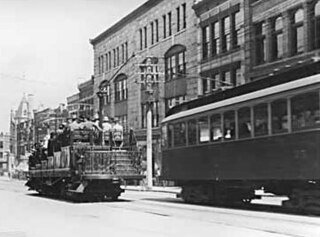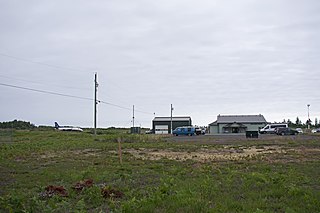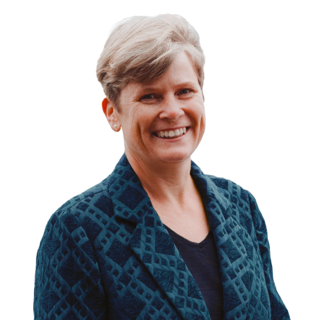
Vancouver Island is an island in the northeastern Pacific Ocean and part of the Canadian province of British Columbia. The island is 456 km (283 mi) in length, 100 km (62 mi) in width at its widest point, and 32,100 km2 (12,400 sq mi) in total area, while 31,285 km2 (12,079 sq mi) are of land. The island is the largest by area and the most populous along the west coasts of the Americas.

Pacific Rim National Park Reserve is a 511 km2 (197 sq mi) national park located in British Columbia, Canada, which comprises three separate regions: Long Beach, the Broken Group Islands, and the West Coast Trail. It is located in the Pacific Coast Mountains, which are characterized by rugged coasts and temperate rainforests.

Port Alberni is a city located on Vancouver Island in the province of British Columbia, Canada. The city lies within the Alberni Valley at the head of the Alberni Inlet, Vancouver Island's longest inlet. Port Alberni currently has a total population of 18,259.

TransLink, formally the South Coast British Columbia Transportation Authority and previously the Greater Vancouver Transportation Authority, is the statutory authority responsible for the regional transportation network of Metro Vancouver in British Columbia, Canada, including public transport, major roads and bridges. Its main operating facilities are located in the city of New Westminster.

The British Columbia Electric Railway (BCER) was a historic railway which operated in southwestern British Columbia, Canada. Originally the parent company for, and later a division of, BC Electric Company, the BCER assumed control of existing streetcar and interurban lines in southwestern British Columbia in 1897, and operated the electric railway systems in the region until the last interurban service was discontinued in 1958. During and after the streetcar era, BC Electric also ran bus and trolleybus systems in Greater Vancouver and bus service in Greater Victoria; these systems subsequently became part of BC Transit, and the routes in Greater Vancouver eventually came under the control of TransLink. Trolley buses still run in the City of Vancouver with one line extending into Burnaby.

Ucluelet is a district municipality on the Ucluelet Peninsula, on the west coast of Vancouver Island in British Columbia, Canada. Ucluelet comes from Yuułuʔił which means "people of the safe harbour" in the indigenous Nuu-chah-nulth language and is the homeland of the Yuułuʔiłʔatḥ. As of 2021, its population was 2,066, a 20.3% increase from 1,717 in 2016.
The Southern Railway of British Columbia, branded as SRY Rail Link is a Canadian short line railway operating in southwestern British Columbia. The main facility is the port at Annacis Island with major import of cars, export of forestry products, and other shipments. The railway has interconnections with three Class I railroads, including Canadian Pacific Kansas City (CPKC), Canadian National (CN) and Burlington Northern Santa Fe (BNSF). It operates a fleet of 29 locomotives, mostly consisting of EMD (11) GP-9 and (10) SW900 locomotives. SRY also currently rosters 2 SD38-2s, an SD38AC and an SD35. Additionally, SRY formerly rostered 4 GMD1s. The railroad also operates a fleet 2,000 rail cars, hauling approximately 70,000 carloads per year. It operates around 123 miles (198 km) of track, 62 miles (100 km) of which is mainline track.

HandyDART is an accessible transit service in British Columbia that uses vans or small buses to transport disabled or elderly passengers who cannot use the normal transit system. This service provides door-to-door service and is available in all of the province's larger centres, as well as in many smaller communities.
The Transit Museum Society of British Columbia (TMS) is dedicated to the restoration and preservation of decommissioned transit vehicles in Vancouver and the adjoining areas. Based in Langley, the Society currently has a fleet of seventeen vehicles: fifteen operational and two non-operational. These vehicles were previously in use by both public and private operating companies between 1937 and 2021.

Tofino-Long Beach Airport is a non-towered airport that is located within the Pacific Rim National Park Reserve. Immediately adjacent to Long Beach, it is 6 nautical miles southeast of Tofino, British Columbia, Canada.

The Victoria Regional Transit System provides public transportation in the Greater Victoria region of British Columbia, Canada. Its operations are governed by the Victoria Regional Transit Commission in association with BC Transit. There were more than 16.8 million riders in 2021.

Marpole Loop is a public transit exchange in the Marpole neighbourhood of Vancouver, British Columbia, Canada. This facility is part of Metro Vancouver's TransLink transit network. Located at the northern foot of the Arthur Laing Bridge, this is the southernmost exchange within the city of Vancouver.

Scott Kenneth Fraser is a Canadian politician who represented the Mid Island-Pacific Rim electoral district in the Legislative Assembly of British Columbia from 2005 to 2020. A member of the British Columbia New Democratic Party, he was first elected as a Member of the Legislative Assembly (MLA) in the 2005 election, defeating one-term Liberal Party incumbent Gillian Trumper, and re-elected in the 2009, 2013 and 2017 elections. During the 41st Parliament (2017-2020) he served in the Executive Council as the Minister of Indigenous Relations and Reconciliation. In that role he led the government through adopting the Declaration on the Rights of Indigenous Peoples Act, with all party support, to implement the United Nations' Declaration on the Rights of Indigenous Peoples (UNDRIP).

Tofino is a town of approximately 2,516 residents on the west coast of Vancouver Island in the Canadian province of British Columbia. The District of Tofino is located at the western terminus of Highway 4 on the tip of the Esowista Peninsula at the southern edge of Clayoquot Sound. It is situated in the traditional territory of the Tla-o-qui-aht First Nations.

The Vancouver trolley bus system forms part of the TransLink public transport network serving Metro Vancouver in the Canadian province of British Columbia. Opened in 1948, the system was originally owned and operated by the British Columbia Electric Railway. By 1954, Vancouver had the largest trolley bus fleet in Canada, with 327 units, and the fleet grew to an all-time peak of 352 in early 1957. There were 19 routes by 1955 and a peak of 20 by the second quarter of 1957. The last route to open in the 1950s was the only express trolley bus service that ever existed in Canada. Several, mostly short, extensions to the system were constructed in the 1980s and later.

The Fraser Valley Heritage Railway Society (FVHRS) is a non-profit organization that runs a historic railway in Surrey, British Columbia. The organization restores and operates historic interurban streetcars previously operated by the British Columbia Electric Railway (BCER). It is one of seven operating heritage railways in the province.

Gord Johns is a Canadian businessman and politician. Since 2015, he has served as the New Democrat Member of Parliament for the federal electoral riding of Courtenay—Alberni in the House of Commons of Canada. He previously served as a town councillor for Tofino, British Columbia, and founded a number of small businesses.
Janet Anderson Craig Peterson is a Scottish-Canadian non-fiction writer, historian, artist, and journalist. She's best known for her books about Vancouver Island, including those about the cities of Nanaimo and Port Alberni. Peterson has been featured in the Times Colonist and Tofino-Ucluelet Westerly News.

Josie Osborne is a Canadian politician who was elected to the Legislative Assembly of British Columbia in the 2020 provincial election. She represents the electoral district of Mid Island-Pacific Rim as a member of the British Columbia New Democratic Party. She has served in the cabinet of British Columbia since 2020, currently as Minister of Health.




















